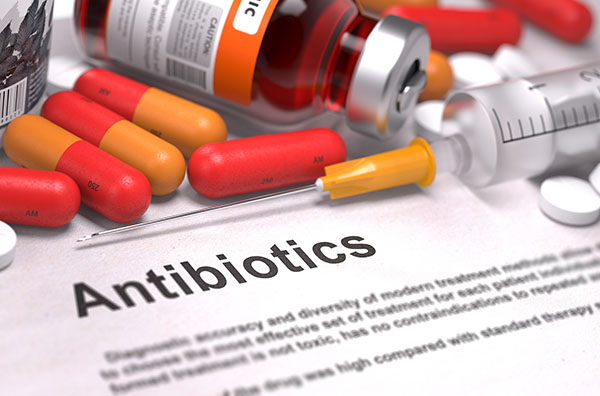
Using the facilities and resources within the school's Department of Chemistry, the team came up with a novel new way to synthesize large libraries of polymers that makes it easier and faster than ever to test each one's respective antimicrobial activity.
The new technology, which also doesn't require sealed vials, gives scientists the unique opportunity to test hundreds of different structures at once for various specific properties. In this case, their goal was to test antibiotic activity across an array of unique polymer samples.
Professor Matthew Gibson and his colleagues took a little detour from the more traditional antimicrobials like penicillin that work their magic by inhibiting certain cellular processes that lead to disease. In the polymers they looked at, antimicrobial activity stems from host-defense peptides actually breaking apart the protective membranes of bacteria.
"Whilst many people have successfully mimicked antimicrobial peptides with polymers, the limiting step was the number of different combinations of building blocks you can use," Gibson told the media about his findings.
"We used simple robotics and a light controlled polymerisation, which lets us do the chemistry open to air, without any sealed vials which are essential for most polymer syntheses."
Most effective polymers were actually those that inhibited bacterial growth
The methods with which Gibson and his team evaluated the polymers' antimicrobial activity allowed for a closer examination of any unexpected activity that occurred during the chemical reactions. Based on this, they were able to ascertain a different mode of action through which polymers get rid of harmful bacteria.
"We prepared the polymers in such a way that at the end of the reaction, we use the robotics to mix polymers directly with bacteria so we could look for unexpected activity, which we achieved," stated Dr. Sarah-Jane Richards, one of Gibson's co-authors.
"Surprisingly, the best materials do not seem to break apart the bacteria as we predicted, but rather inhibit their growth. We are investigating this further," she added.
Polymers now being used to bond other antibacterial substances like copper into clothing and other textiles
Copper is another antimicrobial material that can be embedded in "fiber" form into clothing, furniture, carpet, and other textiles. Another study out of The University of Manchester, published earlier this year, found that copper nanoparticles have vast potential for widespread use in the medical field, including in medical clothing.
Using a process known as "Polymer Surface Grafting," researchers were able to successfully bond copper nanoparticles into various textile materials that, even after 30 washes, maintained strong antibacterial resistance.
Several years back at Sweden's KTH The Royal Institute of Technology in Stockholm, researchers identified a specific polymer substance with similar antibacterial activity that they found can be successfully embedded into sportswear, diapers, bandages, and other materials without spurring the creation of resistant bacteria.
"We have managed to find an antibacterial polymer that attaches stably to cellulose and therefore cannot be released into the environment," stated Josefin Illergård, a chemistry researcher at KTH about the amazing discovery.
"In the future, I believe our material will be used in cleaning clothes, in sanitation for hospitals and in different kinds of water purification filters."
For more news about amazing technological discoveries that are changing the landscape of our modern world, check out Discoveries.news.
You can also learn more about the good and bad of nanotechnology by visiting Nanotechnology.news.
Sources for this article include:
Please contact us for more information.























